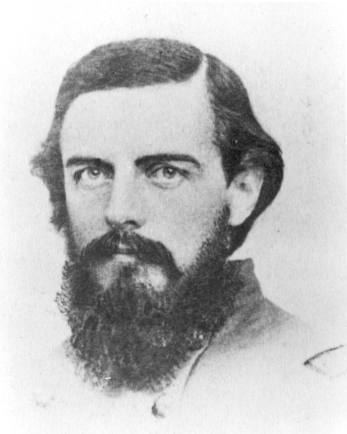Years of service 1861–1865, 1898 Rank Brigadier General | Name Roy Stone | |
 | ||
Born October 16, 1836Plattsburg, New York ( 1836-10-16 ) Battles/wars American Civil WarSpanish–American WarPuerto Rican Campaign Died August 5, 1905, Mendham, New Jersey, United States Place of burial Arlington National Cemetery, Arlington, Virginia, United States Commands held 149th Pennsylvania Infantry Battles and wars American Civil War, Puerto Rican Campaign, Spanish–American War Service/branch United States Army, Union Army Allegiance United States of America, Union | ||
Roy stone singing imagine last video we have on film rip roy x
Roy Stone (October 16, 1836 – August 5, 1905) was a Union Army general during the American Civil War. He is most noted for his stubborn defense of the McPherson Farm during the Battle of Gettysburg.
Contents
- Roy stone singing imagine last video we have on film rip roy x
- Metal roy stone rock bich
- Early life and family
- Civil War
- Postbellum
- Honors
- References
Metal roy stone rock bich
Early life and family
Stone was born in Plattsburg, New York, to Ithiel V. and Sarah Stone. His family had been among the early settlers of the region, and his father owned a large estate. As a young man, he was an engineer and lumberman before the Civil War. Stone married Mary Elizabeth Marker at the First Presbyterian Church in Pittsburgh on August 14, 1862. They would have two children, a son, Richmond and a daughter, Margaret.
Civil War
Stone first served as major of the 13th Pennsylvania Reserves, a regiment that saw action at several early war battles, including Antietam. Stone returned to Pennsylvania to help recruit new regiments; he was commissioned as colonel of the newly raised 149th Pennsylvania Volunteer Infantry in 1863. He commanded a brigade in the third division of I Corps of the Army of the Potomac in the Battle of Chancellorsville but did not see serious combat. During the Gettysburg Campaign, Stone retained command of his three Pennsylvania regiments.
On July 1, 1863, on the first day of the Battle of Gettysburg, his brigade, largely composed of green troops, was posted on McPherson's Ridge south of the Chambersburg Pike. Although the brigade had not seen previous combat, it was instrumental in holding back several assaults by the Confederates. Stone moved his regiments to block attacks by Col John Brockenborough and BG Junius Daniel. His troops held until the Iron Brigade and other Federal units fell back. Stone's men were among last to withdraw from their sector. Stone was severely wounded in the hip and arm in the fighting, and he returned home to recuperate.
After his return to active duty, Stone served briefly as a brigade commander in James Wadsworth's 4th Division, V Corps during Lt. Gen. Ulysses S. Grant's 1864 Overland Campaign. He was removed from command during the Battle of the Wilderness. Stone's horse fell on him on May 5, but many presumed he had been drunk on the battlefield.
Stone commanded the Alton Military Prison in Alton, Illinois, late in the war. He was brevetted brigadier general, U.S. Volunteers, on September 7, 1864, for "gallant services during the war, and especially at Gettysburg."
Postbellum
Stone returned to active military duty serving in the Spanish–American War. After the war, Stone became a leading advocate of the Good Roads Movement. His contributions led to major changes and improvements in highway construction and design. He served as one of the early heads of the Division of Public Roads.
Honors
Stone Avenue in the Gettysburg National Military Park is named in his honor and memory. The palm genus Roystonea is named in memory of the work he did in road building in Puerto Rico during the capture of the island.
